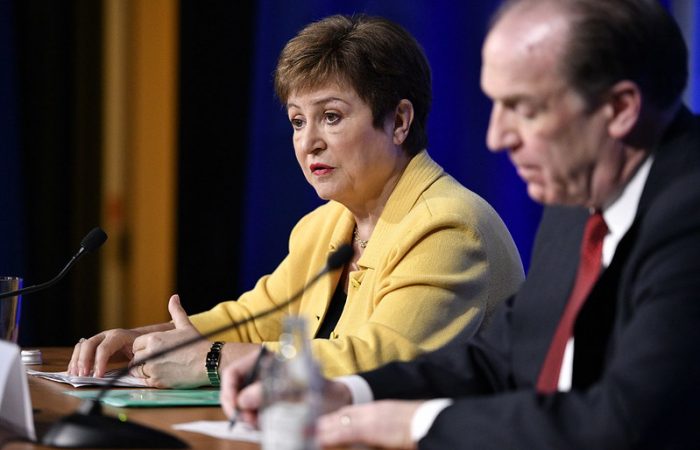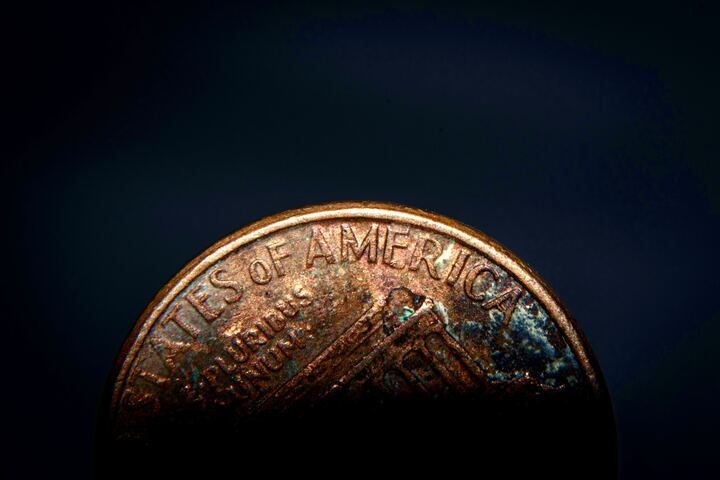On multiple occasions throughout mid-February, the International Monetary Fund (IMF) managing director Kristalina Georgieva reiterated a “V-shaped” description of the IMF’s projections for the economic impacts of the COVID-19 virus outbreak. That popular “V-shape” metaphor dominated similar projections from the likes of Oxford Economics, S&P Global, and Goldman Sachs. The U.S. seemed to stop just short of agreeing with this too, as Steven Mnuchin (Treasury Secretary) downplayed COVID-19 effects on the Phase-One trade deal and Jerome Powell (Federal Reserve Chairman) maintained positive projections for the U.S. economy.
Pent-up Chinese demand and renormalized global supply chains, most believed, would naturally invite “China’s economy [to] return to normal in the second quarter,” resulting in a “relatively minor and short-lived” global impact.
Fast forward to early March and institutions around the globe seem bent on forcing downward growth back up into their once-hoped-for V-shaped model.
On Tuesday, G7 Finance Ministers and Central Bank Governors primed the world’s economy with a statement recognizing “the potential impacts of COVID-19” and ensuring their readiness “to take action.” Within just two days, the U.S. Federal Reserve executed an emergency half-percentage-point rate cut, the World Bank announced $12 billion in funding for countries responding to the outbreak, and the IMF unveiled a $50 billion emergency financing package for afflicted countries.
This response is warranted. Just days after the virus had begun slowing its spread in mainland China, it now seems to be spreading to a new country almost every day, sometimes spreading quickly within countries, too (South Korea, Iran, and Italy). The Organisation for Economic Cooperation and Development (OECD) drastically lowered its 2020 global growth predictions and a U.S. Center for Disease Control (CDC) director stoked further fears when she warned that “it’s not so much a question of if” the virus will spread in the U.S., but “when.”
Even amidst the fiscal and monetary responses, those previous economic predictions’ fabled second quarter V-shape legend will never see its Act 3. Even before last week’s plot twist, a second quarter growth resurgence was already as improbable as it was probable. Many analysts who overemphasized supply chain disruptions — likely because of previous U.S.-China Phase-One trade deal hype — misread demand and underestimated its magnitude.
The MacroPolo in-house think tank of the Paulson Institute argues that the mass psychology of uncertainty depresses consumer sentiment. “It is the lack of demand, rather than supply constraints, that is holding up a swift recovery.” For example, even despite abundant supply, China’s largest natural gas buyer issued a force majeure on March 5. Put another way, fearful consumers do not go out in public and buy cars, phones, plane tickets, or real estate; they buy toilet paper. Put a third way, as Chinese consumers buy less, major industries lose more.
Compared to when it experienced the SARS epidemic in 2003, China now throws around far more economic weight. From 2003 to 2018, China’s GDP grew from 4.3 to 15.7 percent of global GDP and its imports jumped from $415 billion to over $2.1 trillion USD. During this time, China has continued to transition from a primarily manufacturing economy to a consumption-oriented services economy. Thus, lowered Chinese demand affects the global economy more than ever before.
U.S. tourism exports to China serve as just one example of how lower Chinese demand will impact industries. In 2018, despite accounting for only 3.8 percent of total tourists visiting the U.S. (behind Canada, Mexico, and Japan), Chinese tourists accounted for 13.5 percent of U.S. travel exports, the largest ($34.6 billion) of any country (and by a difference of $11.8 billion, too). The U.S. tourism industry will certainly feel first quarter impacts, especially in places like New York City and Orlando. Furthermore, any anticipation for Chinese travellers postponing U.S.-bound winter travel plans for the spring was thrown up in the air earlier this week as the U.S. Travel Association predicted a significant plunge in tourism to U.S. soil.
Previous western hopes that the global economy will feel but a brief hiccup underestimated the full scope of depressed Chinese demand. Any lasting hope that virus slowdowns in China and joint global responses will resuscitate that second quarter V-shaped comeback should be reassessed. Only a few days after UBS reported signs of a Chinese economy ‘gearing up again,’ Caixin reporters revealed how many local Chinese governments have been exaggerating production resurgence; and despite recent Western efforts, consumer uncertainty suggests that the best economic response to growth resurgence is neither these news-breaking fiscal nor monetary ones, but those responses, like the $8 billion Congressional emergency package, which more directly address public health.
China likely will (and should) re-approach economic activity cautiously; for the rest of the world, its battle is just starting. The mass psychology of uncertainty depressing consumer sentiment will only snowball globally, as publics grapple with the increasing contagion-risk of rising infection rates. Its knock-on effects will last, at minimum, well into the second quarter, placing even greater strain on a global economy already exhibiting late-cycle characteristics. As Wall Street fluctuations present their own array of V-shapes, and as speculations raise the possibility of a spanish-flu-like V-shaped autumn resurgence for this novel virus, economists should follow the CDC mentality and not ask “if” this virus will impact the global and U.S. economies, but “how much.”
To be sure, a “U-shaped” third or fourth quarter full recovery may be distantly possible, but for now, the only “V” people should embrace is vigilance.
——
ICAS would like to conclude this commentary by expressing its sincerest condolences to the countless families affected by the global tragedy that is the COVID-19 outbreak.




